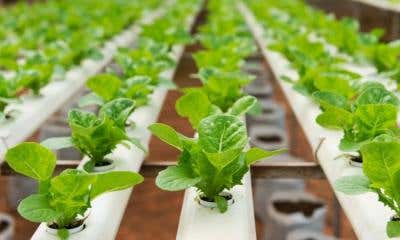Soil: The Traditional Choice
-
Nutrient Retention: Soil acts as a reservoir, holding essential nutrients and providing gradual release to plants over time. It offers a natural balance of organic matter, minerals, and microorganisms that support healthy root development.
-
Microbial Life: Soil contains a diverse ecosystem of beneficial microorganisms that aid in nutrient breakdown, cycling, and plant protection. These microorganisms contribute to soil fertility and overall plant health.
-
Ease of Use: Soil cultivation is generally more forgiving for beginner growers, as it requires less precise monitoring and nutrient management compared to other mediums. It provides a buffer against fluctuations in pH and nutrient levels.
-
Environmental Buffer: Soil acts as a buffer against temperature and moisture fluctuations, helping to stabilize growing conditions and protect plants from sudden environmental changes.
Hydroponics: Soilless Cultivation
-
Precise Nutrient Control: Hydroponics allows for precise control of nutrient delivery, enabling growers to fine-tune the nutrient ratios and ensure optimal plant nutrition. It eliminates the guesswork associated with soil-based cultivation.
-
Water Efficiency: Hydroponic systems use water more efficiently than soil-based systems, as the water is recirculated and reused, reducing water waste.
-
Faster Growth and Higher Yields: With direct access to nutrients, plants in hydroponics systems can grow faster and potentially yield larger harvests compared to traditional soil cultivation.
-
Pest and Disease Management: By eliminating soil, hydroponics reduces the risk of soil-borne pests and diseases, making it easier to maintain a clean and pest-free environment.
Other Alternative Mediums
-
Coco Coir: Coco coir is a popular alternative to soil, offering excellent water retention, aeration, and nutrient absorption capabilities. It provides a neutral pH and can be used in various hydroponic or soil-based systems.
-
Rockwool: Rockwool is a mineral-based medium made from molten rock spun into fibers. It provides good water retention and is commonly used for starting seedlings and rooting cuttings.
-
Perlite and Vermiculite: Perlite and vermiculite are lightweight, porous mediums that enhance drainage and aeration in soil or soilless mixes. They improve root development and nutrient uptake.
Considerations for Choosing a Cannabis Medium
-
Grower Experience: Consider your experience level and comfort with each medium. Soil is often recommended for beginners, while hydroponics may require more technical knowledge and monitoring.
-
Cultivation Goals: Determine your cultivation goals, such as maximizing yield, flavor, or terpene profiles. Different mediums may have varying effects on plant characteristics and end product quality.
-
Environmental Factors: Consider your growing environment, including temperature, humidity, and available space. Some mediums may be better suited for indoor or outdoor cultivation.
-
Resource Management: Assess your access to resources like water, nutrients, and space. Hydroponics may require additional equipment and monitoring systems, while soil-based cultivation may rely on organic amendments.
Choosing the right cannabis medium is essential for successful cultivation. Soil offers a natural and forgiving option, while hydroponics and alternative mediums provide precise nutrient control and potential yield advantages. Consider your experience, goals, environmental factors, and resource management when deciding on the best medium for your cannabis cultivation. Each option has its unique benefits and considerations, so explore different mediums to find the one that suits your needs and preferences.
















